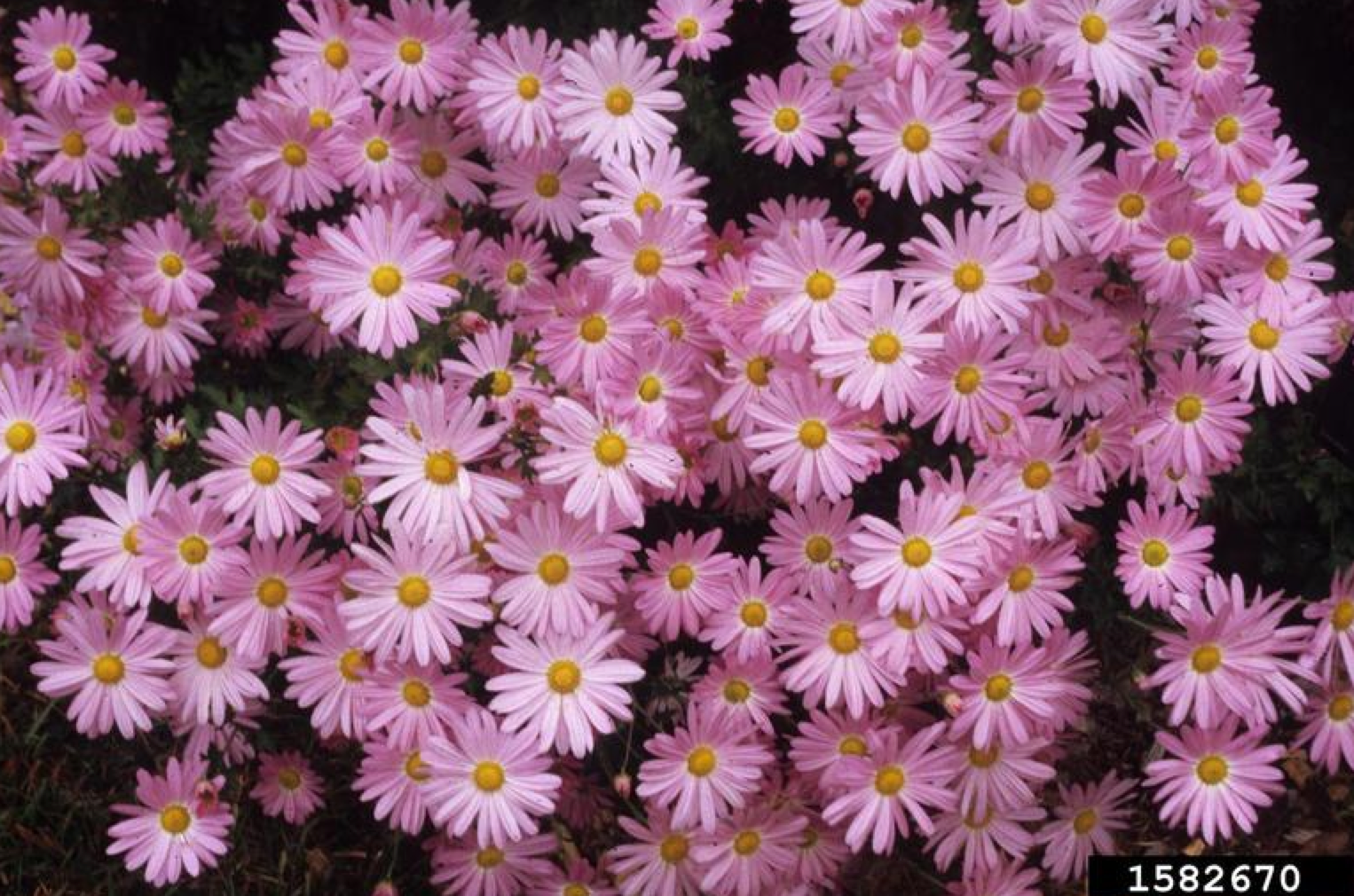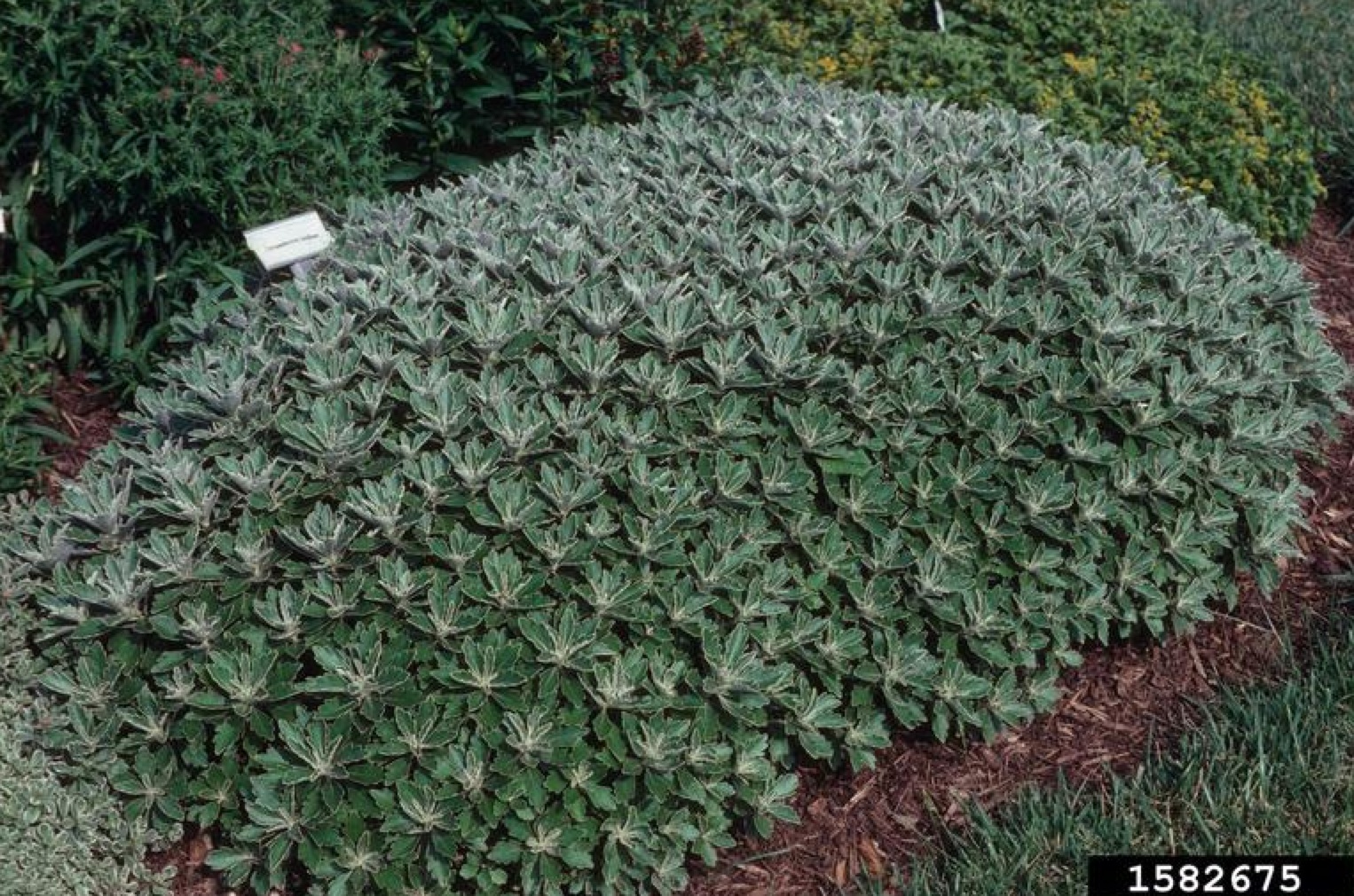With September upon us, Fall will be here before we know it. Fall is always a great season to cool off from such warm summers. One plant staple for our area in the Fall would be a mum.
Chrysanthemum or Dendrantemum?
Garden mums, Dendranthema zawadski or Dendranthema rubellum, are also called Chrysanthemums because the genus used to be Chrysanthemum but has recently changed to Dendranthema. The plants grow up to 18 inches tall and 30 inches wide and grow into a clump. They bloom in August and September with daisy-like flowers as they are in the aster family. The flowers are 2-3 inches across and can be found in many colors including white, yellow, orange, pink, purple, coral, and deep burgundy red depending on the variety. The leaves are arranged alternately on the stem and are lobed deeply with 5 lobes. The photo on the left is from John Ruter, University of Georgia, Bugwood.org
Mums can be found with many different flower colors and many different varieties. ‘Clara Curtis' is a good choice for deep pink flowers that have a yellow center. ‘Mary Stoker' is a good choice for bronze or straw-colored flowers. There are so many more choices so just take the time to stroll through your local nursery or garden center to find the flower color and form of the mum that fits your needs, or choose many different types and colors for a spectacular fall display.
Growing Mums
Chrysanthemums are best grown in full sun but can tolerate part shade. They are a plant that will not tolerate standing water, so don't plant them where water tends to pool in your landscape. Mums need to be pinched back in the early summer to help keep the plants to a compact and uniform size and shape and to help flowering. Pinching should be done 2-3 times in June and July. It should begin when the plants are 5-6 inches high and it should be discontinued around the 4th of July.
Chrysanthemums are susceptible to Aster yellows. Aster yellows is a virus spread by a leafhopper that can cause deformation in the leaves and flowers of the plants. It can cause witches brooms, green or discolored flowers, distorted flowers, and other problems. When aster yellows appears in your plant, the only management practice is to remove it before it spreads to other aster plants in your landscape.
Another problem we face with mums, is their winter hardiness. Many gardeners struggle with maintaining their mum plants over the winter due to repeated freezing and thawing cycles through the growing season as well as wet, heavy soil or lack or snow cover. Longevity of the plants can be enhanced by planting them in a location that is more protected from north winds, discontinuing fertilization by the end of July to reduce new growth at the end of the season, adding several inches of mulch to the soil around the plants through the winter months, and cutting the plants back in the spring rather than in the fall. Hopefully these things will help your mums last longer in your landscape.
The Meaning of Flowers
Chrysanthemums can represent good and bad to different cultures. According to the National Chrysanthemum society, China has used mums as a flowering herb that was used as a headache remedy when the roots were boiled, eaten as sprouts in salads, and as a festive drink from brewed leaves. A Chinese philosopher said "If you would be happy for a lifetime, grow Chrysanthemums". However, in European countries chrysanthemum is known as the death flower because this flower is used mostly as a memorial on graves. Here in the United States, chrysanthemums have grown to be known as the "Queen of the Fall Flowers".
Mums are a great plant to help get color in your landscape through the fall months and into the early winter. Chrysanthemums may be difficult to get through the winters, but with a little mulch and planning for protection from North winter winds, it can do very well in our environments. So, if you want to be happy for a lifetime, plant the Queen of the Fall Flowers, Chrysanthemum.


